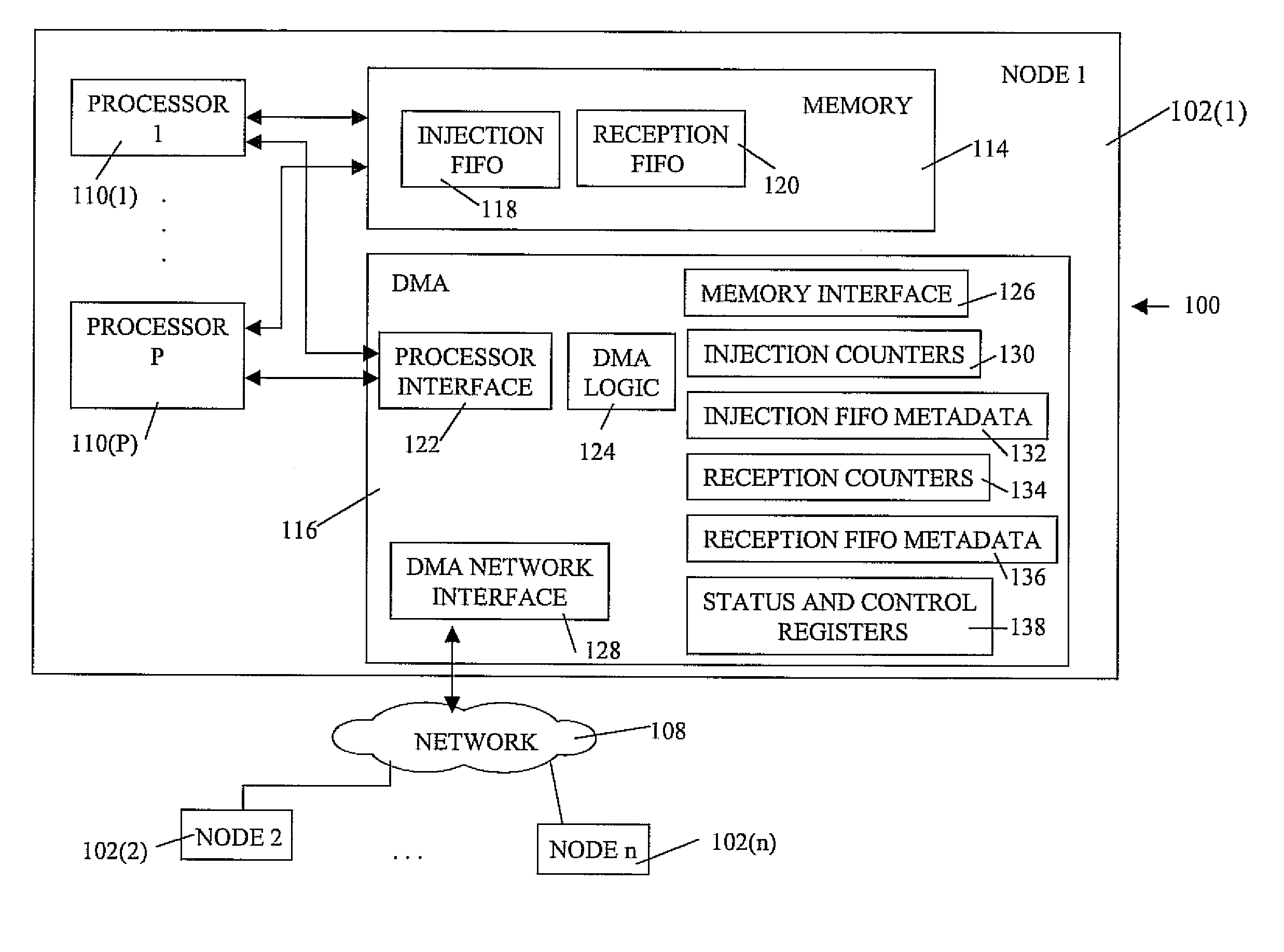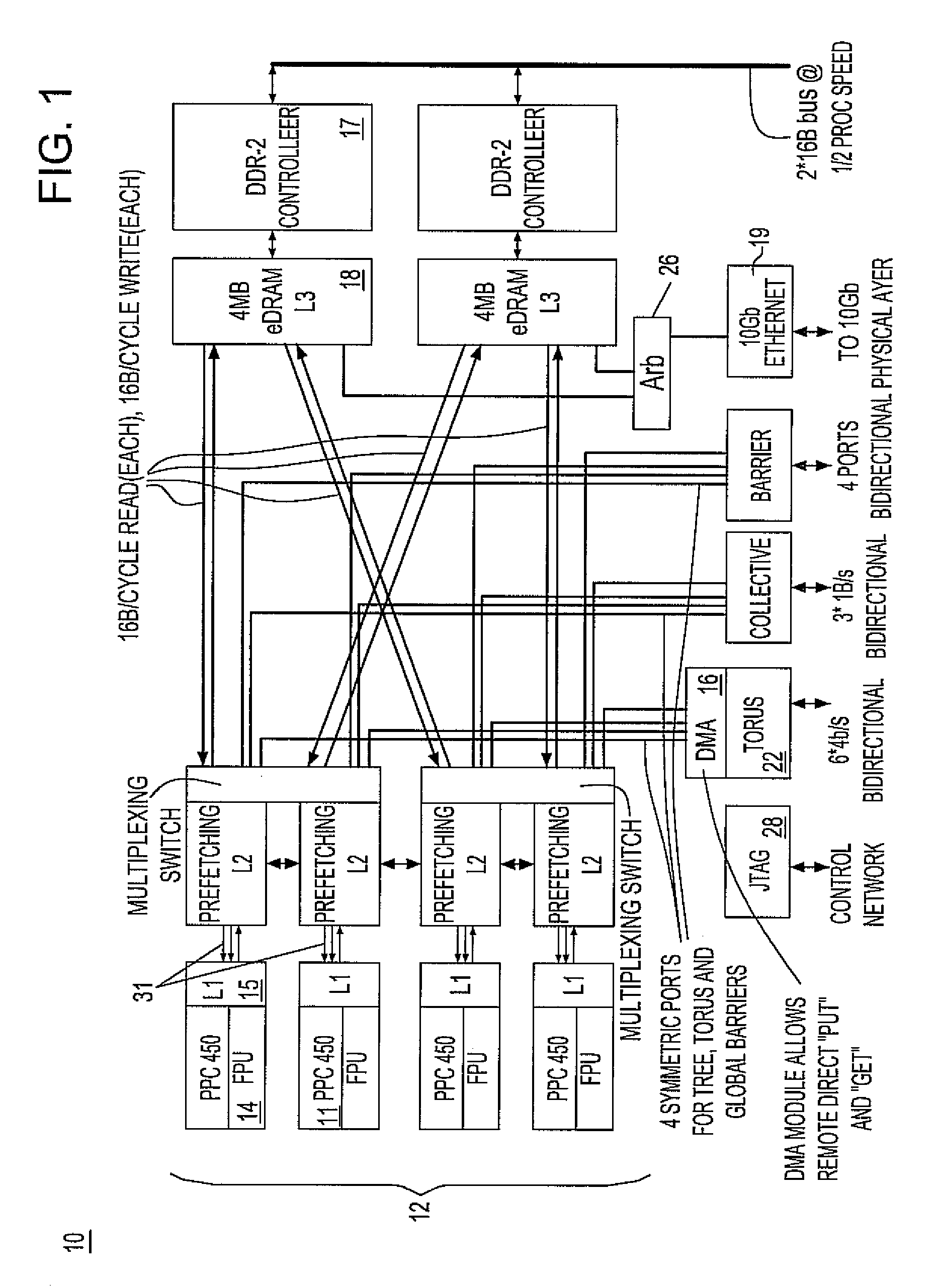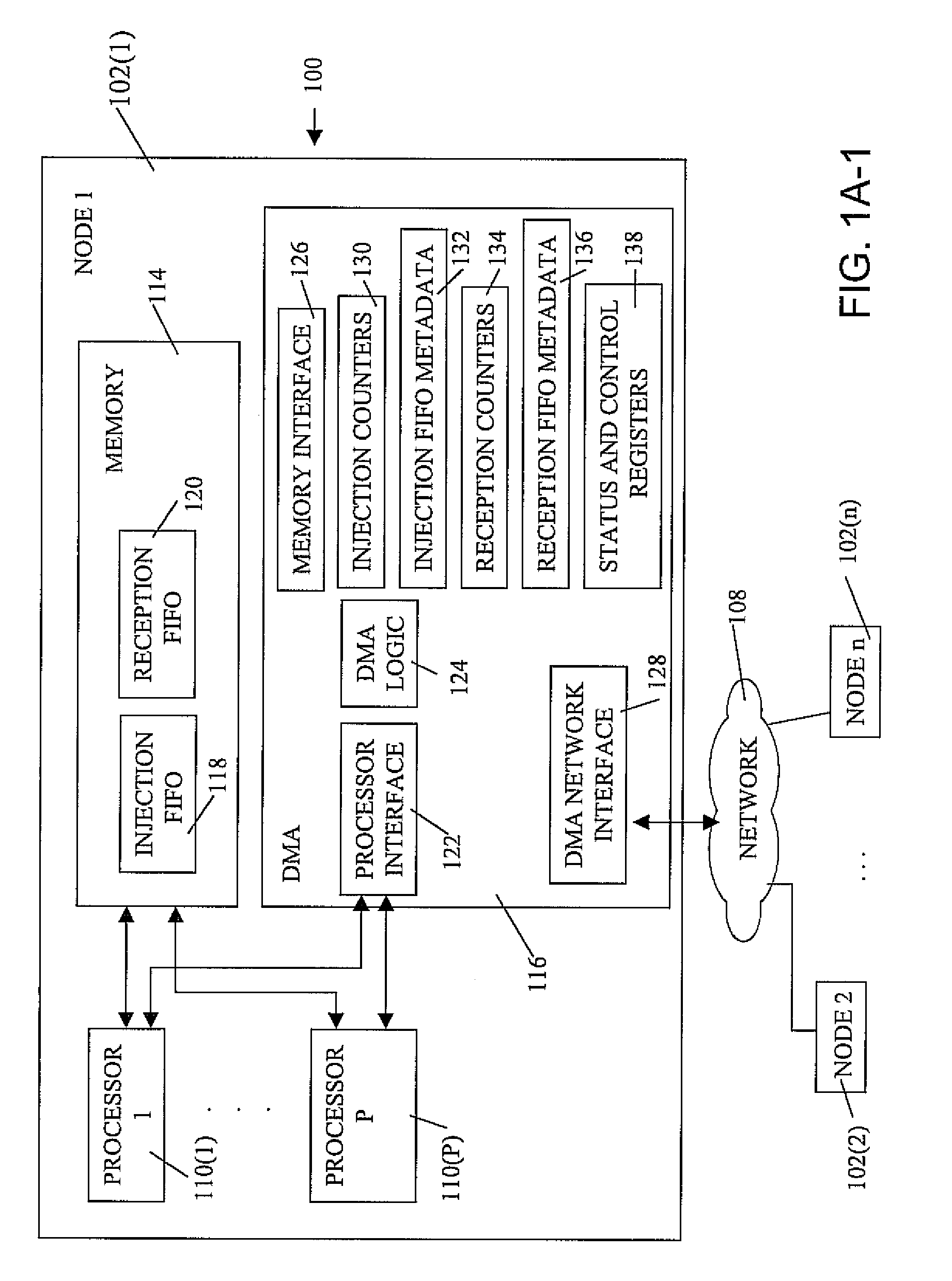Ultrascalable petaflop parallel supercomputer
a supercomputer and ultra-scalability technology, applied in the field of supercomputers, can solve the problems of high power density, unsuitable modern application techniques, and high facility requirements (power, cooling and floor space) for such tera-scale computers, and achieve unprecedented scalability, flexibly selected, and mass scalability.
- Summary
- Abstract
- Description
- Claims
- Application Information
AI Technical Summary
Benefits of technology
Problems solved by technology
Method used
Image
Examples
Embodiment Construction
[0066]The Massively Parallel Supercomputer architecture of the invention (alternately referred to herein as the “supercomputer”) is in the form of a three-dimensional torus interconnected and designed to deliver processing power on the order of a petaflops (a quadrillion floating-point operations per second) for a wide range of applications. In an exemplary embodiment described herein, the Massively Parallel Supercomputer architecture comprises 72K processing nodes organized as a 72×32×32 with each compute node being connected to six (6) neighboring nodes via 6 bi-directional torus links as depicted in the three-dimensional torus sub-cube portion shown in FIG. 5. It is understood however, that other architectures comprising more processing nodes in different torus configurations (i.e., different number of racks) is also used.
[0067]As will be described in greater detail herein, each node comprises a single ASIC and a plurality of SDRAM-DDR2 memory chips. The nodes are interconnected ...
PUM
 Login to View More
Login to View More Abstract
Description
Claims
Application Information
 Login to View More
Login to View More - R&D
- Intellectual Property
- Life Sciences
- Materials
- Tech Scout
- Unparalleled Data Quality
- Higher Quality Content
- 60% Fewer Hallucinations
Browse by: Latest US Patents, China's latest patents, Technical Efficacy Thesaurus, Application Domain, Technology Topic, Popular Technical Reports.
© 2025 PatSnap. All rights reserved.Legal|Privacy policy|Modern Slavery Act Transparency Statement|Sitemap|About US| Contact US: help@patsnap.com



